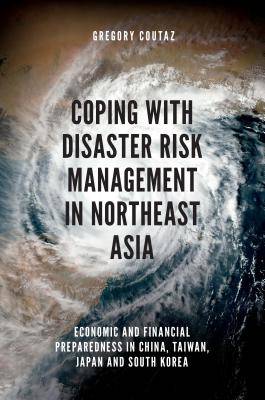
- Afhalen na 1 uur in een winkel met voorraad
- Gratis thuislevering in België vanaf € 30
- Ruim aanbod met 7 miljoen producten
- Afhalen na 1 uur in een winkel met voorraad
- Gratis thuislevering in België vanaf € 30
- Ruim aanbod met 7 miljoen producten
Zoeken
Coping with Disaster Risk Management in Northeast Asia
Economic and Financial Preparedness in China, Taiwan, Japan and South Korea
Gregory Coutaz
Hardcover | Engels
€ 178,95
+ 357 punten
Omschrijving
Disaster risk management is of increasing significance in today's world. Every year, natural disasters cause tens of thousands of deaths and tens of billions of dollars' worth of losses. Northeast Asia holds a high propensity for natural disasters, including earthquakes, tsunamis, typhoons, floods and landslides. Countries in the region have a long history of natural disasters that have devastated populations, cities and their heritage. Restoring livelihoods and rebuilding social and economic infrastructures requires adequate political actions and financial resources, necessitating the implementation of a comprehensive strategy for the management of catastrophe risks.
Coping with Disaster: Risk Management in Northeast Asia provides an examination of the disaster risk management approaches and financing practices adopted in China, Taiwan, Japan and South Korea. The objective of this book is to provide the necessary information on hazards, exposures and vulnerabilities to assist policy development design to increase governmental preparedness for catastrophe risks. It addresses the traditional aspects of disaster risk management, but goes further to focus on the measures of financial protection required to secure post-disaster resources and strengthen budgetary discipline.
Written in an accessible and comprehensible manner, the book will appeal to a wide audience, but is of special interest to policy-makers, public officials, insurance managers and students eager to learn more about disaster risk management in one of the most exposed regions in the world.
Coping with Disaster: Risk Management in Northeast Asia provides an examination of the disaster risk management approaches and financing practices adopted in China, Taiwan, Japan and South Korea. The objective of this book is to provide the necessary information on hazards, exposures and vulnerabilities to assist policy development design to increase governmental preparedness for catastrophe risks. It addresses the traditional aspects of disaster risk management, but goes further to focus on the measures of financial protection required to secure post-disaster resources and strengthen budgetary discipline.
Written in an accessible and comprehensible manner, the book will appeal to a wide audience, but is of special interest to policy-makers, public officials, insurance managers and students eager to learn more about disaster risk management in one of the most exposed regions in the world.
Specificaties
Betrokkenen
- Auteur(s):
- Uitgeverij:
Inhoud
- Aantal bladzijden:
- 184
- Taal:
- Engels
Eigenschappen
- Productcode (EAN):
- 9781787430945
- Verschijningsdatum:
- 31/10/2018
- Uitvoering:
- Hardcover
- Formaat:
- Genaaid
- Afmetingen:
- 157 mm x 231 mm
- Gewicht:
- 376 g

Alleen bij Standaard Boekhandel
+ 357 punten op je klantenkaart van Standaard Boekhandel
Beoordelingen
We publiceren alleen reviews die voldoen aan de voorwaarden voor reviews. Bekijk onze voorwaarden voor reviews.








